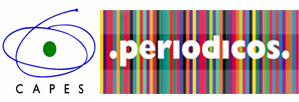Os efeitos das emoções no ensino-aprendizagem de inglês e na formação do futuro professor: uma análise com base no feedback corretivo oral
DOI:
https://doi.org/10.26512/rhla.v14i2.1410Palabras clave:
Emoções;, Língua estrangeira;, Língua inglesa;, Feedback corretivo oral;, Teoria socioculturalResumen
Resumo
Este trabalho apresenta uma análise das emoções em um ambiente presencial de ensino, bem como a relação que pode ser estabelecida entre o feedback corretivo oral e as emoções, por meio da triangulação de dados, e que podem influenciar na formação do futuro professor e no ensino-aprendizagem de línguas. Procuramos ainda identificar as reações dos aprendizes ao feedback corretivo oral recebido pela professora e/ou pelo colega no contexto formal de ensino-aprendizagem de inglês. Os resultados demonstram que os aprendizes apresentam sentimentos distintos quanto à correção, estando relacionados diretamente à s crenças destes e que isso pode influenciar diretamente no sucesso ou no fracasso em sua caminhada para a aprendizagem e para sua atuação profissional.
Palavras-chave: Emoções. Língua estrangeira. Língua inglesa. Feedback corretivo oral. Teoria sociocultural.
Abstract
In this article we present an analysis of emotions in a classroom teaching setting as well the relation that can be established between the oral corrective feedback and emotions, by data triangulation and how it can enhance the future teacher formation and the language teaching and learning. The article also tries to identify learners` reaction to the oral corrective feedback given by the teacher or by their peer in the english classroom setting. The results show that learners present different feelings regarding the corrective feedback and this can be directly related to their beliefs. These results can also have an effect on the success or failure of learners` learning and professional development.
Keywords: Emotions. Foreign language. English language. Oral corrective feedback. Sociocultural theory.
Referencias
ANDRÉS, Verónica. Self-esteem in the classroom or the metamorphosis of butterflies. In: ARNOLD, Jane.(Ed.).Affect in language learning. Cambridge: Cambridge University Press, 1999. p. 87-102.
_______. Writing from the heart ”“writing for the soul ”“encouraging children to wake up the writer within. Humanistic Language Teaching, year 3, n. 1, short article, 2001. Disponível em: <http://www.hltmag.co.uk>. Acessoem 15 jul. 2015.
ARAGÃO, Rodrigo. Beliefs and emotions in foreign language learning. System, v. 39, p. 303-313, 2011.
ARNOLD, Jane; BROWN, HaroldD. A map of the terrain. In: ARNOLD, Jane.(Ed.). Affect in language learning. Cambridge: Cambridge University Press, 1999.p. 1-24.
BARCELOS, AnaMariaF. We teach who we are. Perspectives, v. 10, p. 2-6, 2013.
_______. Understanding teachers’ and students’ anguage learning beliefs in experience: A Deweyan Approach. Tese (Doutorado em Ensino de Inglês como Segunda Língua)”“The University of Alabama, Tuscaloosa, AL, USA, 2000.
_______. Metodologia de pesquisa das crenças sobre aprendizagem de línguas: estado da arte. Revista Brasileira de Linguística Aplicada, v. 1, n. 1, p. 71-92, 2001.
_______.Crenças sobre aprendizagem de línguas, Linguística Aplicada e ensino de línguas. Linguagem e Ensino, Pelotas, v. 7, n. 1, p. 101-121, 2004.
_______. Narrativas, crenças e experiências de aprender inglês. Linguagem e Ensino, v. 9, n. 2, p. 145-175, 2006.
_______.Finding my own voice and accent. Humanizing Language Teaching. v. 10, n. 3, 2008. Disponível em: <http://www.hltmag.co.uk/jun08/sart03.htm>. Acesso em29 jun. 2015.
BARCELOS, Ana Maria F. COELHO, Hilda S. (Org.). Emoções, reflexões e (trans)form(ações) de alunos, professores e formadores de professores de línguas. Campinas: Pontes Editores, 2010.
BROWN, HaroldD. Principles of language learning and teaching. New Jersey: Prentice Hall, 1994a.
_______.Teaching by principles: an interactive approach to language pedagogy. New Jersey: Prentice-Hall, 1994b.
BURDEN, Peter. The teacher as a facilitator: reducing anxiety in the EFL university classroom. Jalt Hokkaido Journal, v. 8, p. 3-18, 2005.
CRESSWELL, JohnW. Projeto de pesquisa: métodos qualitativo, quantitativo e misto.São Paulo:Bookman, 2010.
DEWEY, John. How we think. Lexington: D. C. Health and Company, 1933.
DORNEY, Zoltán; RYAN, Stephen. The psychology of the language learner revisited. New York: Routledge, 2015.
GARDNER, Robert. C.; LAMBERT, Wallace. E. Attitudes and motivation on second language learning. Rowley, MA: Newbury House, 1972.
HORWITZ, Elaine K.Language anxiety and achievement. Annual Review of Applied Linguistics, v. 21, p. 112-126, 2001.
HORWITZ, Elaine K.; HORWITZ,Marie B.; COPE, Jo.A. Foreign language classroom anxiety. In: HORWITZ, Elaine K.; YOUNG, DollyJ. Language anxiety: from theory and research to classroom implications. Englewood Cliffs, NJ: Prentice Hall, 1991.p. 27-36.
IMAI, Yasuhiro.Emotions in SLA: New insights from collaborative learning for an EFL classroom. The Modern Language Journal, v. 94, n. 2, p. 278-292, 2010.
KALAJA, Paula. Students beliefs (or metacognitive knowledge) about language SLA reconsidered. International Journal of Applied Linguistics, v. 5, n. 2, p. 191-204, 1995.
KALAJA, Paula. Research on students’ beliefs about SALA within a discursive approach. In: KALAJA, Paula;BARCELOS, Ana MariaF. (Org.). Beliefs about SLA:New research approaches. Kluwer Academic Publishers. Netherlands, 2003.p. 87-108.
MASTRELLA, MarianaR. Ansiedade e crenças: considerações sobre a afetividade em sala de aula de língua inglesa. In: MELLO, Heloísa A. B.; DALACORTE, MariaC. F. (Org.). A sala de aula de língua estrangeira. 2. ed. Goiânia: Ed. da UFG, 2005. p. 115-153.
OXFORD, RebeccaL. Anxiety and the language learner: new insights. In: ARNOLD, Jane. (Ed.). Affect in language learning. Cambridge: Cambridge University Press, 1999.p. 58-67.
PAJARES, Frank M. Teacher’s beliefs and educational research: cleaning up a messy construct. Review of Educational Research, v. 62, n. 3, p. 307-332, 1992.
_______. Self-efficacy in academic settings. Review of Educational Research, v. 4, p. 543-578, 1996.
PAVLENKO, Aneta; LANTOLF, JamesP. Second languagelearning as participation and the(re)construction of selves. In: LANTOLF, James P. (Ed.). Sociocultural theory and secondlanguage learning.New York: Oxford University Press, 2000.p. 155-177.
SATO, Masatoshi. Beliefs about peer interaction and peer corrective feedback: efficacy of classroom intervention. The Modern Language Journal, v. 97, n. 3, p. 611-626, 2013.
SCARCELLA, Robin C.; OXFORD, RebeccaL. The tapestry of language learning: The individual in the communicative classroom. Boston: Heinle & Heinle Publishers, 1992.
SILVA, SuleneV.; FIGUEIREDO, FranciscoJ. Q. Erro e correção: as crenças de dois professores de escola pública e de alguns de seus alunos. Revista Brasileira de Linguística Aplicada, v. 6, n. 2, p. 113-141, 2006.
TSUI, AmyB. M.Introducing classroom interaction. London: Penguin English, 1995.
______. Reticence and anxiety in second language learning. In: BAILEY, Kathleen M.; NUNAN, David.(Ed.). Voices from the language classroom: quantitative research in second language acquisition. Cambridge: Cambridge University Press, 1996.p. 145-167.
VIEIRA-ABRAHÃO, Maria. Helena. Crenças, pressupostos e conhecimentos de alunos-professores de língua estrangeira e sua formaçãoinicial. In: VIEIRA-ABRAHÃO, MariaHelena. (Org.). Prática de ensino de língua estrangeira: experiências e reflexões. Campinas: Pontes, 2004.p. 131-152.
SWAIN, Merrill. The inseparability of cognition and emotion in second language learning. Language Teaching, v. 46, n. 2, p. 195-207, 2011.
SWAIN, Merrill; KINNEAR,Penny; STEINMAN, Linda. Sociocultural theory in second language education: an introduction through narratives.New York: MM Textbooks,2011.
VYGOTSKY. Lev. S. Mind in society: the development of higher psychological processes. Cambridge: Havard University Press, 1978.
_______. Thinking and speech. In: RIEBER, RobertW.; CARTON, AaronS. (Ed.). The collected works of L.S. Vygotsky, Volume 1:problems of general psychology, including the volume. New York: Plenum Press, 1987.p. 39-285.
WOODS, Devon. Thesocial construction of beliefs in the language classroom. In: KALAJA, Paula; BARCELOS, Ana. MariaF. New approaches to research on beliefs about SLA. Amsterdã: Kluwer, 2003.p. 55-86.
ZHENG, Hongying. A review of research on EFL pre-service teachers’ beliefs and practices. Journal of Cambridge Studies, v. 4, n. 1, p. 1-9, 2009.
Descargas
Publicado
Número
Sección
Licencia

A Revista Horizontes de Linguística Aplicada de http://seer.bce.unb.br/index.php/horizontesla/index é licenciado sob uma Licença Creative Commons Atribuição-Uso não-comercial-Vedada a criação de obras derivadas 3.0 Unported.
- Autores mantém os direitos autorais e concedem à revista o direito de primeira publicação, sendo o trabalho simultaneamente licenciado sob a Creative Commons Attribution License o que permite o compartilhamento do trabalho com reconhecimento da autoria do trabalho e publicação inicial nesta revista.
- Autores têm autorização para assumir contratos adicionais separadamente, para distribuição não-exclusiva da versão do trabalho publicada nesta revista (ex.: publicar em repositório institucional ou como capítulo de livro), com reconhecimento de autoria e publicação inicial nesta revista.




